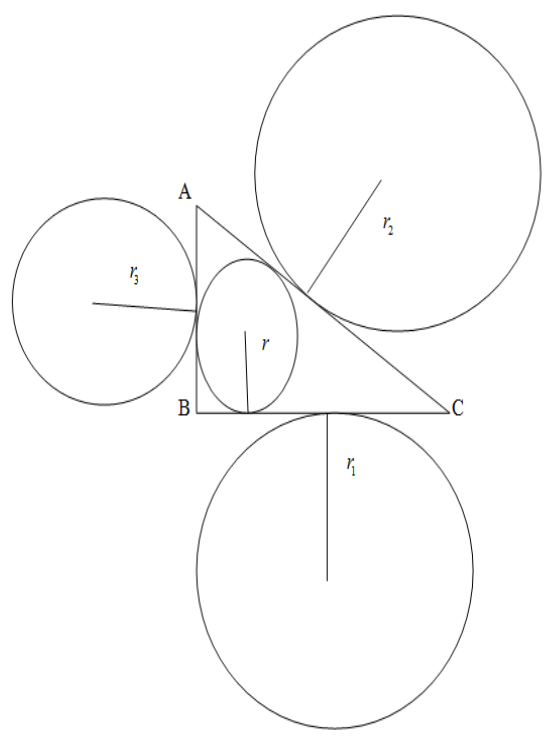
If r is the radius of incircle and
Answer
147.3k+ views
Hint: We substitute
Complete step-by-step solution:

We are given that
Where the
We also know the formula involving tangent and length of the sides as
We know that the area of the triangle with semi-perimeter
We are given in the question that
We are asked to find the measurement of the angle B. We put the values of
We can divide
We now multiply
We use the formula (3) and replace the right hand side with
We now divide
We use the formula (2) and get ,
We solve above quadratic equation and get ,
We reject the result
Note: We note that the incircle which touches all sides in the interior of the triangle has its center called incentre as the point of intersection of angle bisectors while excircles touch only 1 side in the exterior with center at the exterior known as excentre. The general solution for
Complete step-by-step solution:

We are given that
Where the
We also know the formula involving tangent and length of the sides as
We know that the area of the triangle with semi-perimeter
We are given in the question that
We are asked to find the measurement of the angle B. We put the values of
We can divide
We now multiply
We use the formula (3) and replace the right hand side with
We now divide
We use the formula (2) and get ,
We solve above quadratic equation and get ,
We reject the result
Note: We note that the incircle which touches all sides in the interior of the triangle has its center called incentre as the point of intersection of angle bisectors while excircles touch only 1 side in the exterior with center at the exterior known as excentre. The general solution for
Recently Updated Pages
How to find Oxidation Number - Important Concepts for JEE

How Electromagnetic Waves are Formed - Important Concepts for JEE

Electrical Resistance - Important Concepts and Tips for JEE

Average Atomic Mass - Important Concepts and Tips for JEE

Chemical Equation - Important Concepts and Tips for JEE

Concept of CP and CV of Gas - Important Concepts and Tips for JEE

Trending doubts
JEE Main 2025 Session 2: Application Form (Out), Exam Dates (Released), Eligibility, & More

JEE Main Exam Marking Scheme: Detailed Breakdown of Marks and Negative Marking

JEE Main 2025: Derivation of Equation of Trajectory in Physics

Electric Field Due to Uniformly Charged Ring for JEE Main 2025 - Formula and Derivation

JEE Main Participating Colleges 2024 - A Complete List of Top Colleges

Degree of Dissociation and Its Formula With Solved Example for JEE

Other Pages
JEE Advanced Marks vs Ranks 2025: Understanding Category-wise Qualifying Marks and Previous Year Cut-offs

JEE Advanced 2025: Dates, Registration, Syllabus, Eligibility Criteria and More

JEE Advanced Weightage 2025 Chapter-Wise for Physics, Maths and Chemistry

Learn About Angle Of Deviation In Prism: JEE Main Physics 2025

Electrical Field of Charged Spherical Shell - JEE

NCERT Solutions for Class 11 Maths Chapter 4 Complex Numbers and Quadratic Equations




